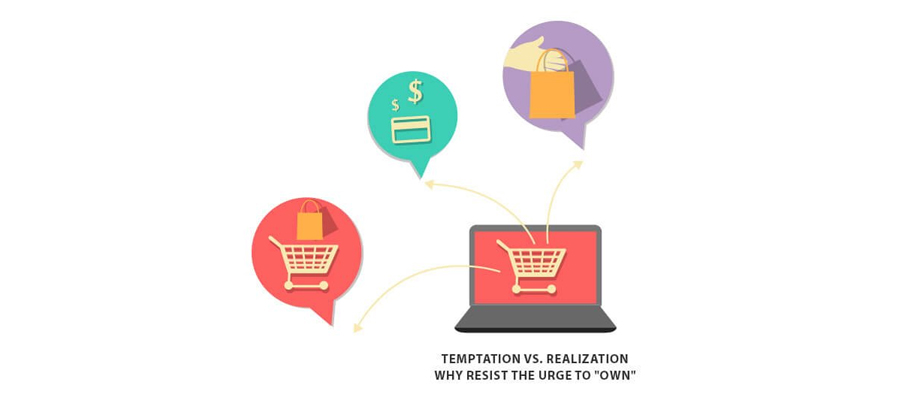
Our urge to own things is embedded deep into our culture of consumerism. In fact, the buying experience itself has been described as a ritual assurance of love and self-worth, offering an escape from daily life.[1]
That may be so.
But today’s sharing economy has shown us through companies like Uber and Airbnb just what is possible, even in a society based on the principle of ownership.[2] Because although the age of consumerism is still very much alive and kicking, something has changed, and the business world is at the front of that trend-
So why are we so keen today on not owning?
It’s not the urge to buy that’s changed, it’s the urge to own. And don’t get me wrong- we still like to own things very much, but it’s not always as beneficial as it used to be. Today’s technology allows us to outsource or rent virtual products and services that save us money, time, efforts and offer better ROI. And that, if you will, is the whole story in a nutshell.
But to illustrate this more clearly, maybe it’s best to go back to the old ‘Build vs. Buy’ equation
Want to talk to us about customizing your online products? click here.
The temptation
Studies made over the years show that it’s not the products people actually buy, but the process of buying that matters (Dr. Ronald Faber, School of Mass Communications at the University of Minnesota).[3]
And businesses are no different than people, in that their urge to own a product is as strong as ever, especially when it comes to implementing a new application on an existing platform.
The reasons are multiple-
- Fear of losing control over the environment and not feeling comfortable depending on a service provider.
- Some companies may already have an existing infrastructure, and they feel they don’t need to partner with a service provider.
- Training of an outsourced partner takes time and requires a special skill-set for managing the outsourcing relationship.
- Fear of constraints by vendor ready-made structures[4]
So why bother, right? If you have an in-house IT team, why go outsourcing something you can DIY?
Realization
The answer to the question above is simple- because with today’s technology, DIY just doesn’t pay off. Today- unless there’s a competitive advantage in building your own IT systems- solutions can and should be outsourced from vendors.[5]
And here are the main reasons why-
- It’s cheaper. There you have it, it’s as simple as pie- building a web application requires man power, sophisticated IT abilities, time, documentation, etc. All of which are translated into a lot of money.
- Accelerated implementation time. Yes, exactly the opposite of what you would imagine- with no staff hiring and training, without equipment procuring- outsourced implementation time is significantly shorter.
- Increased flexibility to meet changing business conditions.[6]
- The return of investment is far superior when outsourcing from vendors.[7]
- And here’s the cherry-top: outsourcing allows you to focus on growing your revenue rather than investing time, money and resources into building and maintaining a new platform.[8]
And as for the fear of constraints by vendor ready-made structures- this has been a viable concern, but technological has made it possible for outsourcing vendors to offer flexible enough solutions based on an expertise understanding of customer’s needs and demands.
Bottom line
Today the urge to build your own web application is overcome by the benefits of outsourcing. It keeps your IT team more focused on delivering solutions that meet commercial demand and business needs.[9] And so companies should buy what they can, and reserve their in-house resources for the most core, valuable assets.[10]
Or in the words of Tien Tzuo, founder of Zuora: “why own anything anymore?”[11]
Want to talk to us about customizing your online products? click here.
[1] (Goleman, 1991)
[2] (Ingham, 2015)
[3] (Goleman, 1991)
[4] (dimension data, 2012)
[5] (Wall Street Systems)
[6] (dimension data, 2012)
[7] Ibid
[8] (FastSpring)
[9] (Wall Street Systems)
[10] (Darrow, 2014)
[11] (Ingham, 2015)




